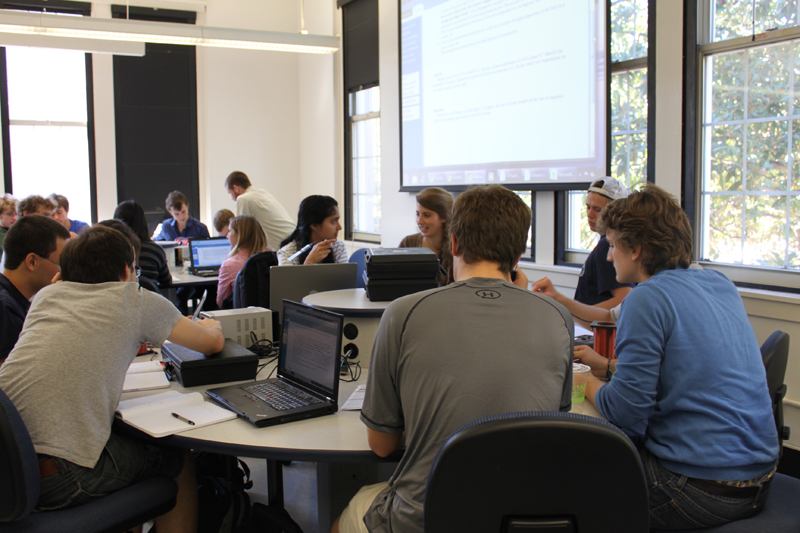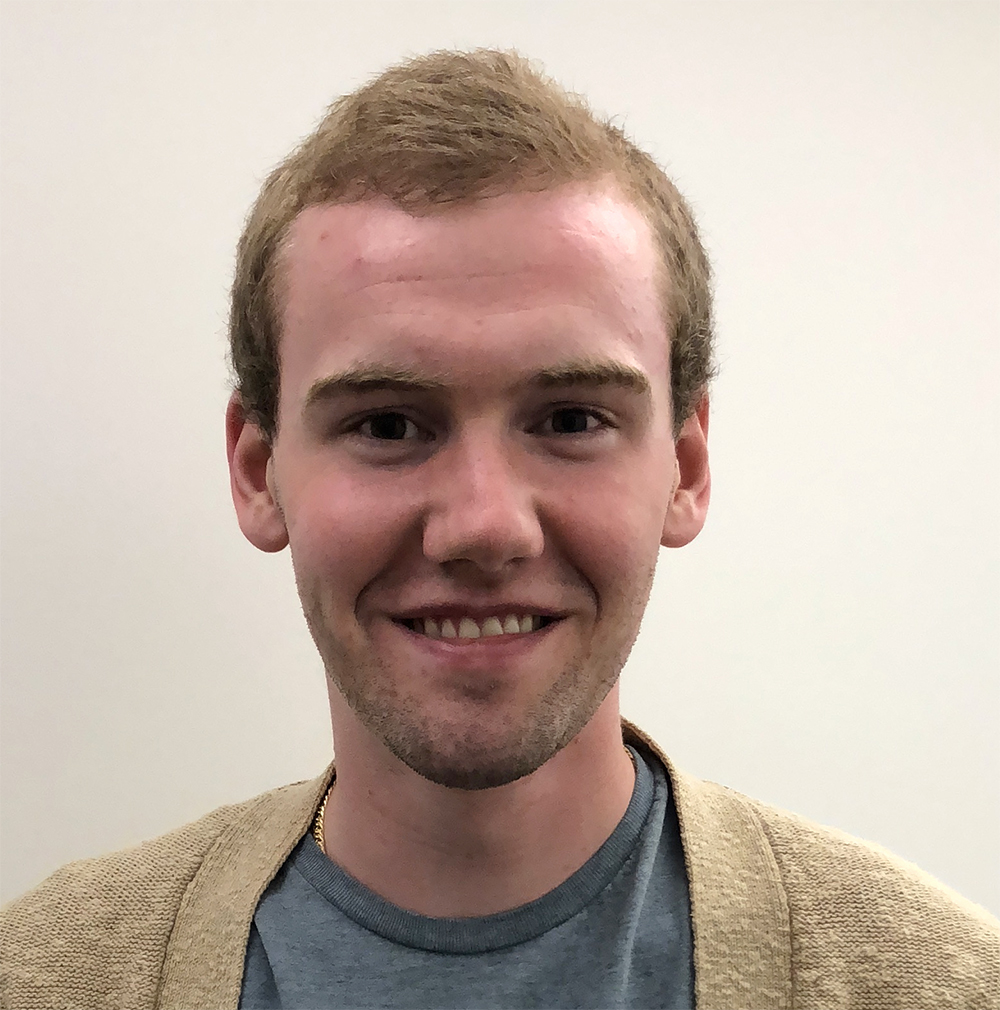
Room 208 in Phillips Hall is no longer an ordinary teaching laboratory. Gone are the cramped aisles with chairs and tables configured in a traditional manner. Instead, students sit at large round tables for labs.
At a time when budget cuts are affecting class sizes, professors in the physics and astronomy department in UNC’s College of Arts and Sciences are using a new model to make learning more interactive, hands-on and efficient for undergraduate students.
The Student-Centered Active Learning Environment for Undergraduate Programs, or SCALE-UP, originally developed at NC State University, is designed to allow students to work in teams and interact with the material and better engage in discussion.
Art Champagne, William C. Friday Professor and the department chair, said SCALE-UP allows students to actively learn by working on a complex formula with their groups rather than an instructor dictating material to them.
“You have to be engaged somehow in acquiring skills or information,” he said. “Figuring it out for yourself is a much more effective way of acquiring information than someone telling you how it works.”
The SCALE-UP classroom is limited to 45 students. Physics 117: “Electromagnetism and Optics” uses that to full capacity with a lecture/studio hybrid. (In contrast, there are 56 students in a traditional-style lecture section.)
Visiting lecturer Jennifer Weinberg-Wolf encourages collaborative group learning in the class. Students sit at tables of nine, which are then divided into three smaller groups. The trios then do their own experiments to find results. Due to its size, the class has to adjust for limited resources, with groups trading equipment or materials, such as power supplies or coils, as needed.
Tyler Fitch, a junior environmental science major who is pursuing a computer science minor, said that the studio format promotes understanding.
“We work example problems and solve them in class,” he said. “It promotes one-on-one interaction, which is great, and the group setting helps students help each other.”
Junior Joey DeRusso, a chemistry major, said the SCALE-UP model reinforces information to improve learning. “The fusion and reinforcement of ideas and topics from one day to the next makes learning seemingly difficult topics much easier,” he said.
Funding from the physics and astronomy department, the College and ITS helped to renovate room 208 in 2009 and the neighboring room, 206, in 2011. Room 206 is being used for teaching laboratories until further space is freed up in Phillips Hall — some time in 2012. Once that happens, room 206 will be devoted to SCALE-UP, which will double capacity for these courses.
However, four courses this fall are using the SCALE-UP idea as a model, even without a renovated classroom.
Fabian Heitsch, assistant professor of physics and astronomy, teaches physics 331: “Introduction to Numerical Techniques in Physics.”
With the introduction of SCALE-UP in the spring of 2010, he started to make changes to his course, creating more opportunities for students to interact, in addition to lectures. Students can attempt different computational methods to a problem by applying them in various situations.
Sheila Kannappan also uses methods inspired by SCALE-UP for two of her astronomy classes, where she teaches a split-level class of students at different academic levels, with both physics and astronomy majors and non-majors.
She uses a mixture of pairs and three-person groups to improve understanding among the students and her own understanding of their progress.
One method, Think-Pair-Share, begins with each student responding to a problem by holding up a paper to show their answer. Immediately, Kannappan can see how they understand the material. After they discuss the problem in pairs, Kannappan notes that the team usually arrives at the right answer.
Kannappan also divides the class into groups of three, where they analyze data. This interaction helps both the non-majors and majors in the class, as it exposes science in a different way, and the majors are forced to understand the concepts if they have to help explain it to their peers, she said.
[Story by Kristen Chavez ’13]



